Airplanes may be huge, but have you ever noticed how small their tires look in comparison?
If you’ve ever looked out an airport’s window as a plane lands or when it has landed, you may have been surprised at just how small the tires are compared to the plane.
The reason airplane tires are small is because they need to be small to be effective.
Smaller tires are better designed for landing and taking off because they can easily withstand the high temperatures and pressures involved during landing.
Smaller tires also reduce an aircraft’s weight.
Airplane tires are small relative to the size of aircraft, though generally the bigger theaircraft is, the bigger its tires will be.
A majority of commercial plane’s tires are only 27 inches in diameter.
Smaller aircraft have smaller tires at 15 inches in diameter.
The first types of airplane tires were titled the ‘Type 1’, and they had diameters of 27 inches.
Modern general airplane tires are known as the ‘Type 3’ and include more diverse sizes like the 5.00-5 and 6.00-6.
These numbers refer to the tire’s width and the diameter of the rim ledge. So a 5.00-5 has a width of 5 inches and is used for a wheel with 5 inches in diameter.
The King Air uses 8.50-10 size tires. This means that this plane’s tires have a 26 inch diameter when measured from the outside.
The Cessna Hawk XP uses 6.00-6 with 4 PLY tires. These tires have a diameter of 17.5 inches when measured from the outside.
The Boeing 747 uses h59x19.0–20 tires. These tires have a 49-inch diameter when measured from the outside.
The Airbus A320 uses 30×8.8R15 tires. These tires have a diameter of 29. 5 inches when measured from the outside.
5 inches when measured from the outside.
The F-15 uses 34.5×9.75–18 tires. This means the F-15’s tires have a diameter of 34.5 inches when measured from outside.
The C-130 uses tires of a 56×20/24PR size. This means the C-130 tires have a diameter of 55.5 inches when measured from outside.
An airplane tire’s footprint, which is the amount of surface area of the tire that touches the ground, times air pressure, must match an aircraft’s weight to support an aircraft.
Since air pressure is generally large, airplane tires need to be small.
Large tires would not benefit aircraft. Instead, having larger tires would result in airplanes not being able to land properly.
Larger tires increase an aircraft’s load and could damage runways. Additionally, larger tires would make a plane bounce more when landing.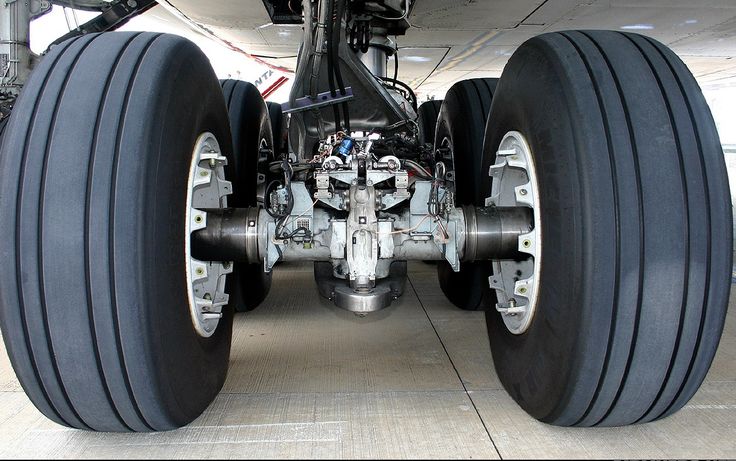
In view of these considerations, it makes sense to keep airplane tires as small as possible.
The Airbus A380 has the largest commercial plane tire size in the world at 56 inches in diameter and 21 inches in width.
The A380 uses 22 tires.
The largest aircraft tires ever made were for the B-36 Bomber in the 1950s.
These tires were over 5 feet in width and 10 feet in diameter.
The airplane tire manufacturing industry is dominated by 4 firms that control 85% of the global market. These firms are:
The remaining 15% of the global airplane tire market is mostly made up by small manufacturers in other countries like China.
Some of these other companies include Guilin lanyu Aircraft tire Development Co, which is a subsidiary of ChemChina.
Many helicopters and planes have the same tire size. This is especially true for general aviation aircraft.
Helicopter tires are also designed similarly to airplane tires since helicopter tires face the same pressures and temperatures as airplane tires.
But, trucks have larger tires than both helicopters and airplanes.
Truck tire sizes vary widely, but the average truck will have a larger tire than the average airplane or helicopter.
Related: Do Helicopters Have Wheels?
The average airplane tires can withstand 500 landings before requiring repair.
Typically, after 500 landings, the tire’s top layer is peeled off and needs to be replaced with new treading.
Unless the rest of the tire also suffers damage, normally just the tread will be replaced.
Related: How Long Do Airplane Tires Last?
Airplane tires are made of proprietary rubber compounds, aluminum steel reinforcements and nylon and aramid fabrics.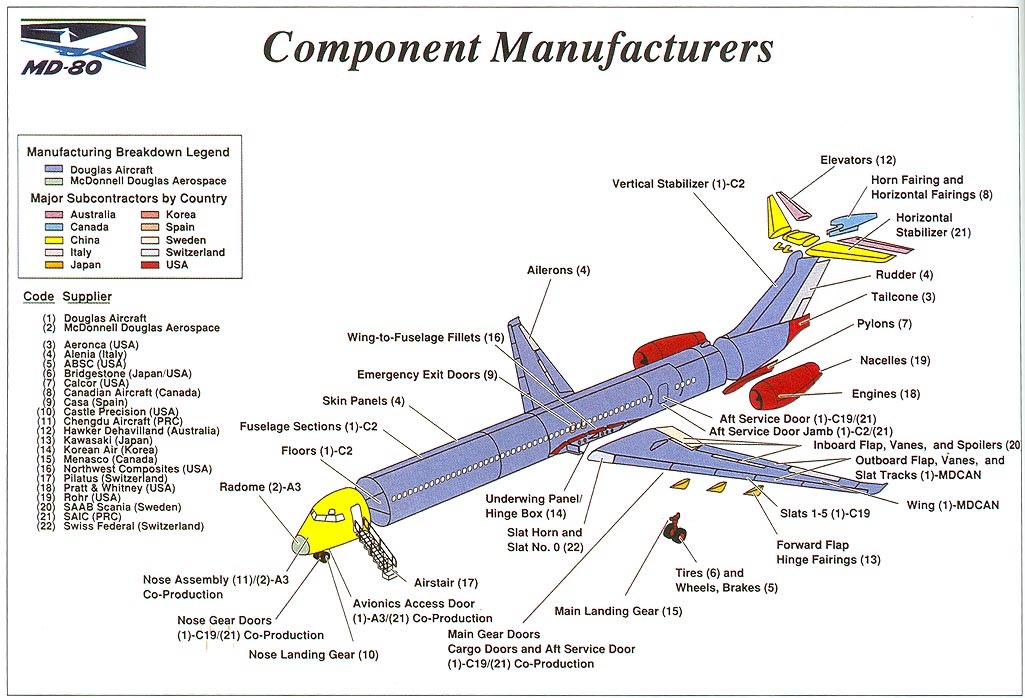
These materials ensure that the tire has sufficient strength to support a plane.
Airplane tires are also inflated with nitrogen to prevent explosions during impact.
Nitrogen is an inert gas, so the high pressure and temperature changes during landing don’t affect it as much as they do regular air-filled tires.
Depending on numerous factors, a plane’s tires could be changed anywhere between 120 to 400 landings.
Airplane tires need to withstand both extreme temperatures and high pressures.
Long-range airplanes like the Boeing 747 also complete thousands of takeoffs and landing over their course of operations, so most aircraft will frequently need their tires changed.
Longer-range aircraft tend to have more tires changed over the course of their operation than shorter range aircraft.
In conclusion, airplane tires are relatively small compared to the planes they’re fitted on. Airplane tires are small because they need to be. Smaller tires have reduced surface area contact with the ground and reduce aircraft’s weight.
Smaller tires have reduced surface area contact with the ground and reduce aircraft’s weight.
See Also: How Many Wheels Do Airplanes Have?
First pneumatic airplane-specific tire: Goodyear 1909
Number of tires on the Antonov AN-225 freighter: 32
Typical cost of a tire for a light plane: $100-$250
Cost of the tires on the Airbus A380: About $5,500 apiece
Number of retreads a tire can take: Up to 10 before replacement
Composition of almost all aircraft tires: Rubber, steel and fabric
Length of time it takes NASCAR pit crews to change a tire: A few seconds
For ready-to-go crew to change a tire on an Airbus A320: 45 minutes
Inflation pressure in a typical car’s tires: 35 psi
Inflation of the tires in a Lockheed Martin F-16: 320 psi
A close-up of the single-wheeled portside main gear unit on a Convair XB-36.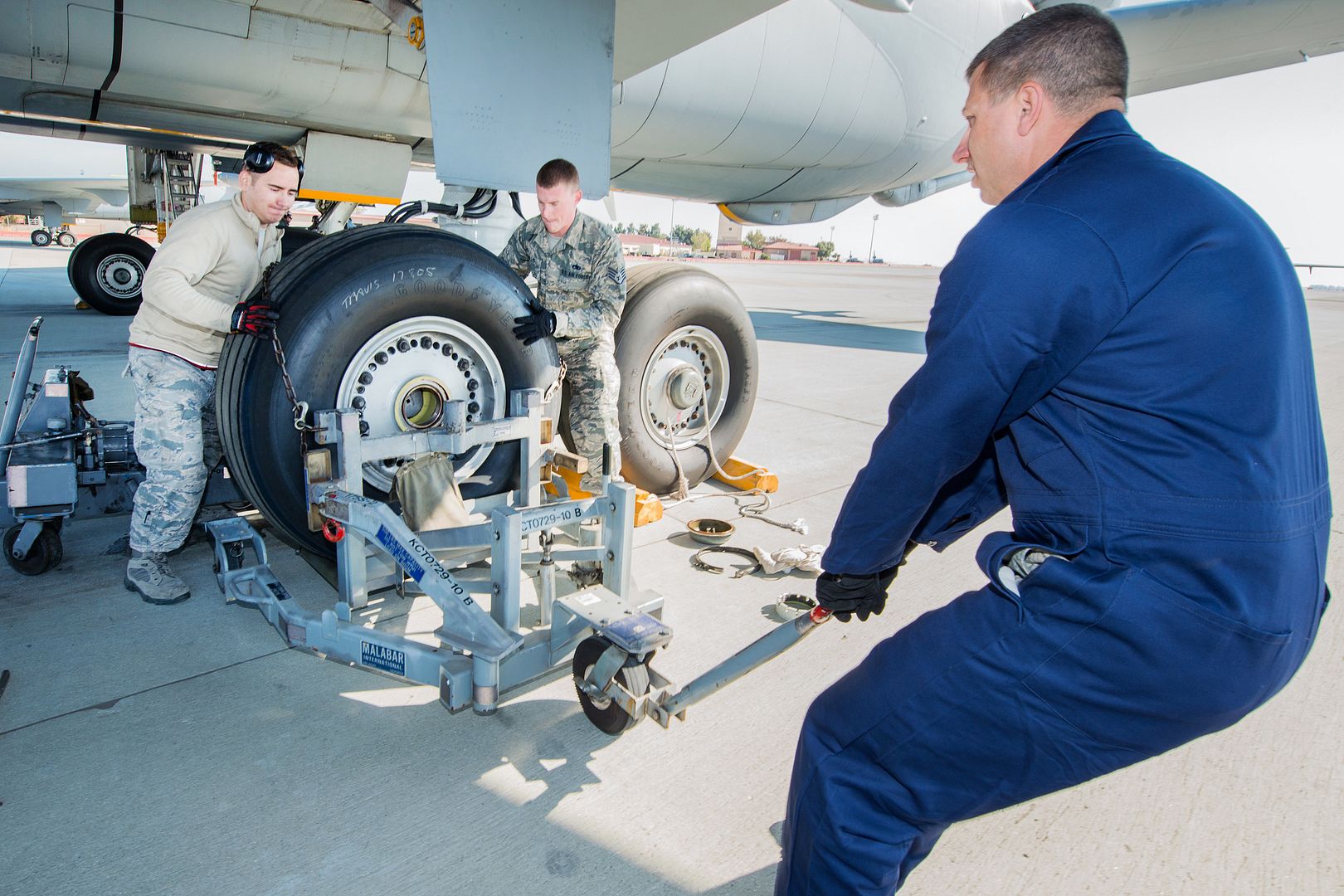
Inflation gas in a light plane: Air
In an airliner: Nitrogen
Reason: Nitrogen is inert, so it doesn’t react with the rubber at high altitudes
Rated speed for a typical airliner tire: 200-250 mph
Reason for chines (perpendicular fins on the sidewalls): Keep rain water from getting into the engine inlets
Largest aircraft tire (that we’ve been able to find): 110 inches, B-36 Peacemaker bomber
Weight of the B-36 tire on the runway: 156 pounds per square inch
Number of runways worldwide in late ’30s rated to handle that load: 3
Ultimate replacement: A four-wheel bogie (multi-wheel gear)
Failed alternative: Tank-style tracks
Problem with SR-71 Blackbird tires: High heat could ignite them
Solution: An aluminum–latex blend filled with nitrogen
Inflation pressure: 415 psi
Size of DC-3 tailwheel: 6 inches, larger than J-3 Cub main gear
Reason for FAA testing of large-tire airplanes, 1995: Frequent stall-spin crashes
FAA theory at the time: Large tires cause stall increase as bank increases
FAA finding: Inconclusive
Largest size tundra tire approved by FAA today: 35-inch tire diameter
X-15 nose tire problem: Prone to shredding on landing
Landing speed of X-15: 242 mph
Main gear on X-15: Metal skids
First radial tire approved by FAA: Goodyear, 1983
Reason that rubber builds up on runways: Spin-up friction
Amount deposited on a runway by landing jet liner: 1 pound
Pounds of rubber built up on a typical international airport runway every three months: 10,000 pounds
Reason it has to be regularly removed: Increases risk of hydroplaning
Most common removal method: Water pressure (up to 40,000 psi and 30 gallons per minute)
Other methods: Chemical removal and milling of the runway surface
Number of dimensions used to describe aircraft tires: At least 12
Number of tires on the space shuttle: 6 (two nose and four main gear tires)
Rated speed, respectively, for those tires: 250/263 mph

The modern aircraft tire is a complex, high-tech structure designed to handle enormous speeds and loads at the highest possible weight and size. Despite this, the tire is one of the least understood and most underestimated elements of an aircraft. Everyone will agree that they are "dirty, black and round." But in reality, an aircraft tire is a multi-element component constructed from three materials: cord, rubber, and metal. By weight, an aircraft tire is 50% rubber, 45% cord and 5% metal. Digging into the component materials in more detail, you can see the different types of rubber compounds and nylon cords. They have their own special properties for the successful completion of tasks.
All aircraft tires can be divided into 2 categories:
Before mounting a tire on an aircraft wheel, a series of tests are carried out over it.
These test checks are divided into static and dynamic.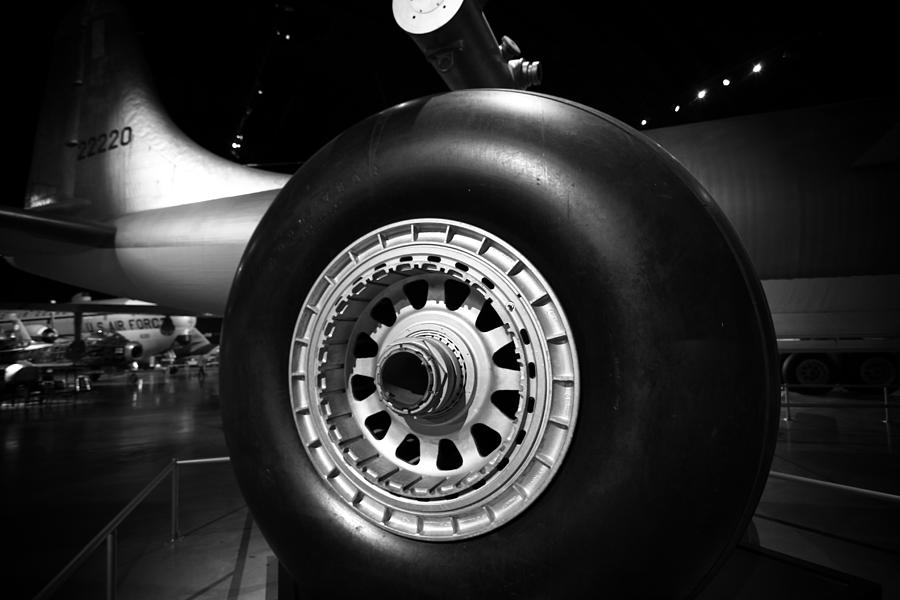
Static
1. Strength test under internal hydraulic pressure. Method: a tire is mounted on a test wheel and pumped with water to the point of rupture. For a certain time, the tire must withstand the load without destruction.
2. Determining the tire pressure on the wheel rim. One of the methods is copying. Place one copy sheet between two sheets of plain paper. Then this paper "structure" is installed between the wheel flange and the tire bead. Next, the tire is pumped up. When the heel of the wheel bead touches the vertical surface of the flange, the fit pressure on the rim is recorded. This will be reflected in the form of a trace on plain paper from the copy sheet.
3.Identification of the tightness of tubeless aircraft tires. The tire is inflated to the maximum pressure and kept at the same temperature for a certain time. During this time, the pressure inside the tire decreases due to the increase in its dimensions. Next, measure the pressure difference, how much it fell over the allotted time.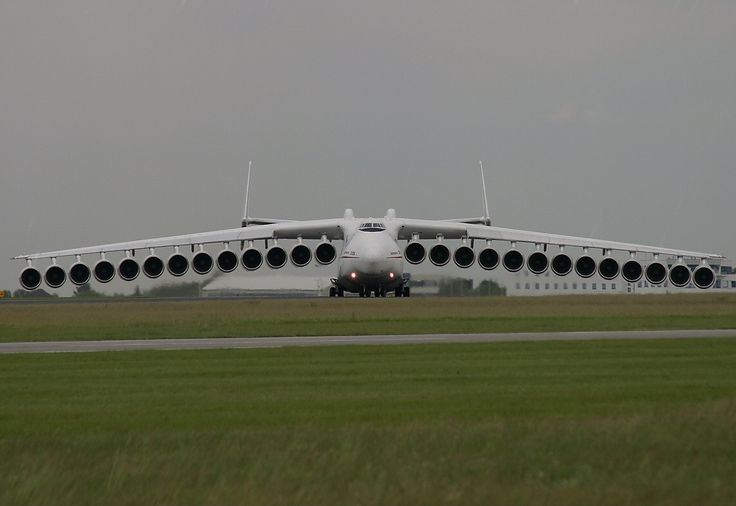
4. Determination of tire dimensions. The aircraft tire is installed on the wheel, pumped up to the maximum nominal pressure. A certain time is kept at room temperature. After the end of this time, the tire is pumped up to its original value. Then the following values are measured: outer width, outer diameter, width and diameter along the shoulder area.
Dynamic
The influence of the curvature of the drum is taken into account.
2. Carrying out dynamic tests of tires in conditions as close as possible to operation: for speed, load, etc.
How to change jet tires
Aircraft tires are admired in the air and safe on the ground. But landings and takeoffs have a negative impact on their condition.
During the year, an aircraft travels a distance of 8 thousand kilometers on the ground, taxiing, maneuvering, flying in and landing. Contacts of aircraft landing gear elements with the runway strongly affect tire wear.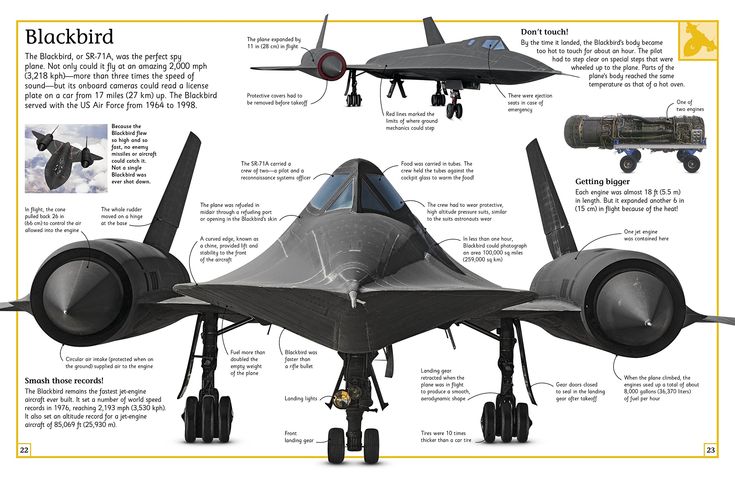 Changing tires is a real problem for airlines because it costs a lot of money, but for air carriers, safety always comes first. A qualified team of tire fitters is required to complete the change within 30 minutes.
Changing tires is a real problem for airlines because it costs a lot of money, but for air carriers, safety always comes first. A qualified team of tire fitters is required to complete the change within 30 minutes.
Frankfurt has one of the busiest international airports and is home to one of the largest airlines, Lufthansa.
The aircraft taxis to the parking lot, a team of specialists begins work. The beginning of the process is very similar to replacing car tires, the only difference is that if the car has 4 wheels, then the aircraft has as many as 30. Blocks of 8 pieces are located under the nose and wings and are attached to the so-called. carts. The trolley is lifted using a jack. The jack's hydraulic pump uses the pressure inside the tire.
after an emergency landing
Having lifted the structure, the team removes the wheel. First, the specialist unscrews the fixing nut. From the skillfully honed movements of the mechanics, it can be seen that the work is ordinary.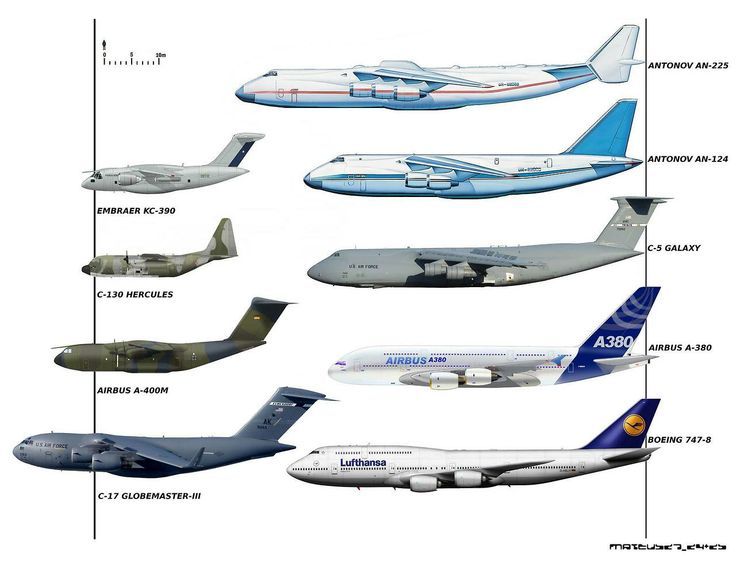 The price of a mistake is high and is measured by the lives of people who will fly this plane. Mechanics need to know when it is time to change a tire. Diagnostic markers for this are located in the tread grooves. If these indicators are not visible, then the tire needs to be changed.
The price of a mistake is high and is measured by the lives of people who will fly this plane. Mechanics need to know when it is time to change a tire. Diagnostic markers for this are located in the tread grooves. If these indicators are not visible, then the tire needs to be changed.
When you remove a tire, you can see its huge dimensions: width - 0.5 m, diameter - 1.5 m.
Aircraft tires are under enormous stress. For several hours they are in conditions of very low temperatures, and during the landing of the aircraft they pick up speed up to 280 km / h. When landing, the tire temperature is 260°C. Why, then, do these components not explode in the air and burst on contact with the runway pavement?
The secret is inside the tire: it is not filled with compressed air, like a tire, but with nitrogen gas. Therefore, aircraft tires are always dry, without water inside and cannot freeze. They are also non-flammable.
It took the German mechanics 15 minutes to make one wheel, and they proceed to remove the next wheel, and put the “changed shoes” in place. The specialist carefully checks the tightening of the bolts, because their loosening threatens with disaster.
The specialist carefully checks the tightening of the bolts, because their loosening threatens with disaster.
Next, the tires are inflated, the jack is lowered, all the bolts are checked to be in place, and they are reinforced with safety wire. This completes the tire replacement process.
Hello everyone. In continuation of the topic of describing aviation systems "for dummies" (here and here), I have prepared a new text about the landing gear and wheel brakes of aircraft.
Paragraph added after reading the comments: Before continuing, I want to clarify that my main specialization is avionics equipment, and not individual aircraft systems. Accordingly, I also tell the "dummies" a "truncated" picture of the world, sufficient for their work.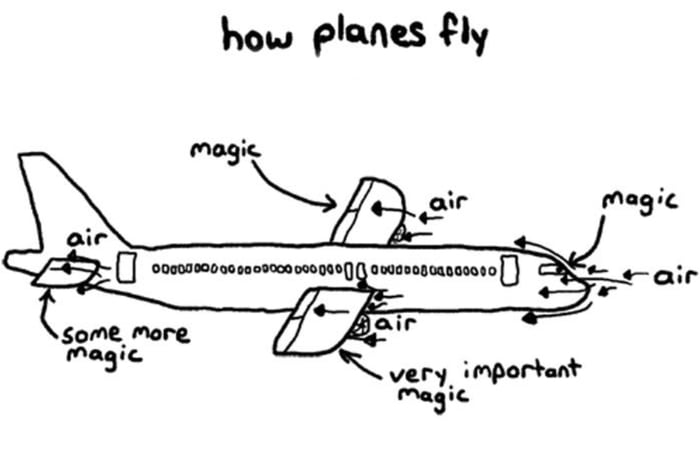 It seems to me that these materials may be of interest to a wider circle of readers. At the same time, I do not claim to complete the coverage of the topic under consideration. So don't shoot the pianist, he plays the best he can. :)
It seems to me that these materials may be of interest to a wider circle of readers. At the same time, I do not claim to complete the coverage of the topic under consideration. So don't shoot the pianist, he plays the best he can. :)
The system of wheels on which the aircraft rests when moving on the ground is called the landing gear. Modern airliners use a tricycle landing gear system with two main landing gear located under the wing behind the center of gravity and one front landing gear located at the nose of the aircraft. The main landing gear is equipped with brakes, and the front landing gear is made swivel so that the aircraft can maneuver when moving on the ground.
On large aircraft such as the Airbus 380 or Boeing 747, auxiliary struts are made in addition to the main struts to distribute the considerable weight of the giant aircraft. Shock absorbers are installed on all landing gear legs. The principle of operation and purpose of which are similar to automobile ones, but the main task is to mitigate landing overloads so that the loads on the aircraft components do not exceed the allowable ones.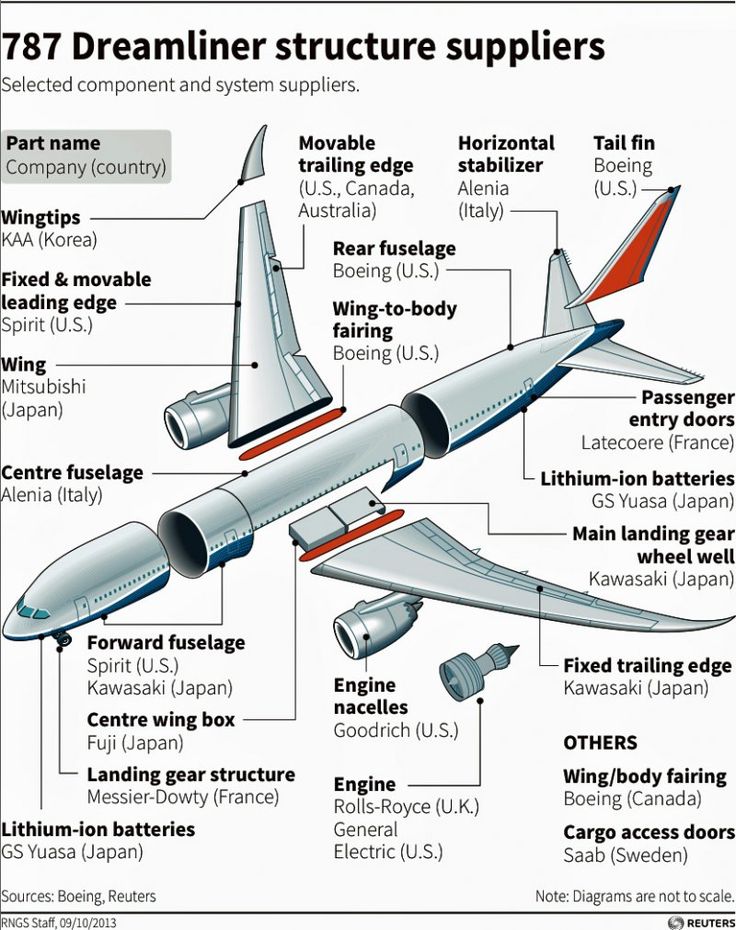 .
.
In addition to distributing the aircraft's weight, the nose strut pivots left and right to allow the aircraft to maneuver while moving on the ground.
The nose strut can be controlled in two ways:
The steering of the nose strut with the help of pedals is carried out during the takeoff run and landing run, when the aircraft speed is high enough. At the same time, with the help of the same pedals, the pilot controls the deflection of the rudder.
clickable picture
The deflection limit of the nose strut when controlled by pedals is specially limited, as a rule it is 10 degrees. Turning onto taxiways when you need to deflect the nose strut at angles of the order of 50-70 degrees will not work. At low speeds, the nose strut control stick is used for taxiing.
This control is only used when taxiing and will automatically disengage at high speeds.
clickable picture
Main landing gear is a trolley on which wheels equipped with brakes are hung.
Aircraft brakes are similar to car brakes, only much more powerful, which is not surprising, because. they have to slow down a car weighing 30-600 tons from speeds of the order of 250 km / h to zero on a runway (runway) limited in length.
Aircraft brakes consist of a "sandwich" of brake discs and pads.
In the comments, it was clarified that the static part of the brakes in our case is also called discs. In a conversation with specialized specialists, I always heard about "blocks". Perhaps this is jargon, but this has little effect on the description of the “for dummies” system. In any case, the principle of operation is the same as in automobile brakes, and the implementation is much more powerful.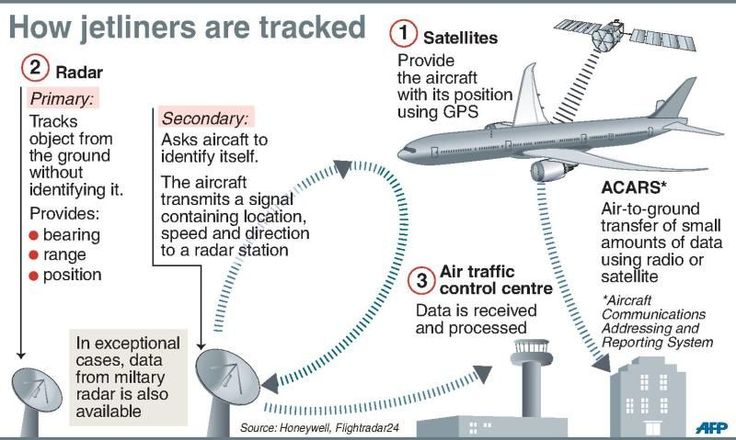
The wheel brakes can be applied in two different ways: "manually" and automatically.
"Manually" the pilot brakes with the pedals. The question may arise, how does the pilot manage to control and brake with the pedals and nose strut? The fact is that the pedals of the aircraft are arranged completely differently from those in the car. Directional control is performed by moving the pedals back and forth. In this case, two pedals move synchronously: left forward-right back and vice versa. The brakes are controlled by pressing the pedal. Each pedal can be pressed separately, the so-called differential braking is another way to control the direction of movement on the ground. If the left brake is used more intensively than the right one, then the plane will turn to the left and vice versa.
Automatic braking mode is activated by itself when a certain event occurs. There can be two such events:
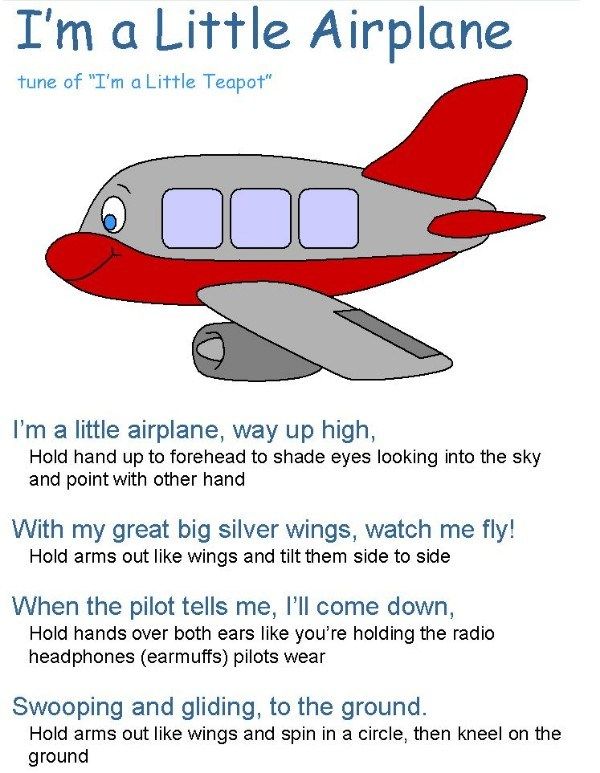 This deceleration mode is called Rejected Takeoff (RTO)
This deceleration mode is called Rejected Takeoff (RTO) The pilot can activate / deactivate the auto-braking mode in Airbus and SSJ-100 aircraft using one of the four buttons under the landing gear retraction handle (In Boeing, a switch is used for this). Three buttons (LOW, MED, MAX) correspond to different intensities of braking during landing, and the fourth (RTO) activates the aborted takeoff mode.
With auto braking when landing, everything is clear. Let's look at the aborted takeoff mode.
Aborted takeoff is a mode where the crew decides to abort the takeoff due to a major failure. A takeoff can only be aborted before the "decision speed" is reached. The decision speed depends on the length and condition of the runway surface and is calculated based on the ability to brake without overrunning the runway. If a malfunction occurs during the acceleration process after reaching the decision speed, the crew will continue to take off, no matter what happens.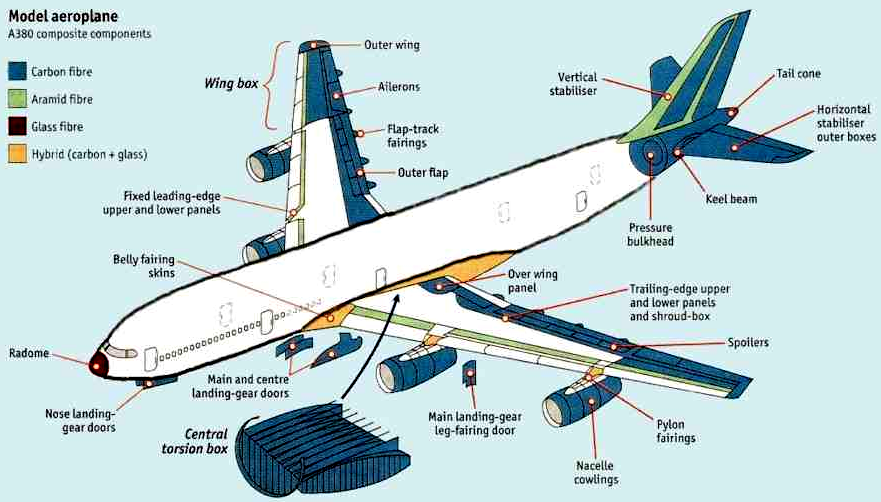 If before, it will slow down.
If before, it will slow down.
Before each takeoff, the crew must activate auto-braking. The start speed and intensity of braking during a rejected takeoff directly affects whether the aircraft rolls out of the runway or not. Activated auto-braking ensures that braking is initiated immediately after the engines are taken out of take-off.
If you have to abort the takeoff at maximum takeoff weight and at the maximum speed, then despite the fact that in addition to the wheel brakes, the crew uses reverse and air brakes, the energy that the brakes must absorb heats them up so that they begin to glow like a light bulb. After the aircraft comes to a complete stop, the brakes do not stop working. They must withstand at least 9 more0 seconds before the landing gear is set on fire. According to the regulations, the fire brigade, which is always on duty at airports (and on time!), will arrive at the plane in 90 seconds.
Thanks for the comments - reminded me of one very important function of airliner brakes: anti-lock braking system (ABS).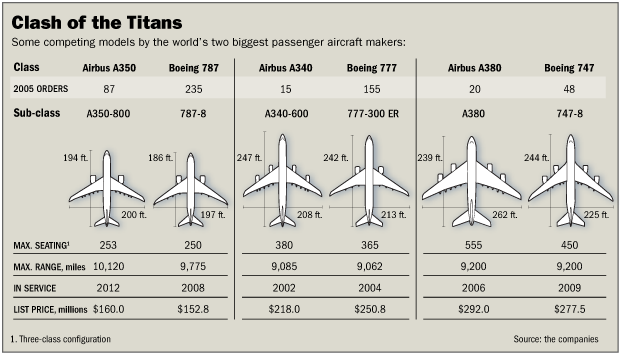 The main difference between the ABS of an aircraft and that of a car lies in the consequences of wheel blocking: if a car blocking leads to a decrease in controllability and an increase in braking distance, then the blocked wheels of the aircraft simply explode during landing due to friction on the asphalt. And without tires on the main struts, braking will be neither effective nor safe. So the ABS on an airplane is an unswitchable and rather critical function.
The main difference between the ABS of an aircraft and that of a car lies in the consequences of wheel blocking: if a car blocking leads to a decrease in controllability and an increase in braking distance, then the blocked wheels of the aircraft simply explode during landing due to friction on the asphalt. And without tires on the main struts, braking will be neither effective nor safe. So the ABS on an airplane is an unswitchable and rather critical function.
In addition to the brakes and steering the nose strut, another important function is connected with the landing gear - retracting / extending the landing gear. The landing gear retraction in normal mode is controlled using the corresponding knob on the dashboard.
Up - retract, down - release. By the way, you can not be afraid to accidentally "fold" the landing gear when the plane is on the ground - in modern airliners there is a blocking from such actions when the landing gear is "compressed" - the shock absorbers are in a compressed state under the action of weight LA .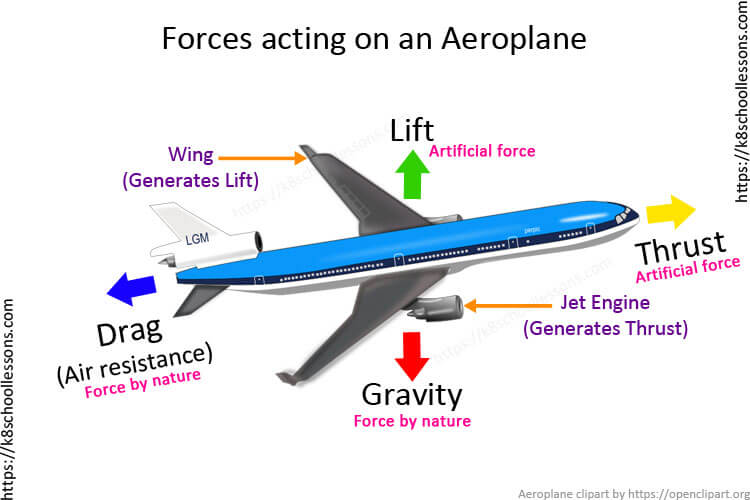
To improve the aerodynamic properties of the aircraft, the niches in which the retracted landing gear are placed are closed with flaps, so the procedure for normal landing gear retraction looks something like this:
The whole process takes 20-40 seconds. If something goes wrong in the process, then the system interrupts the process, because. there is a chance of breaking something.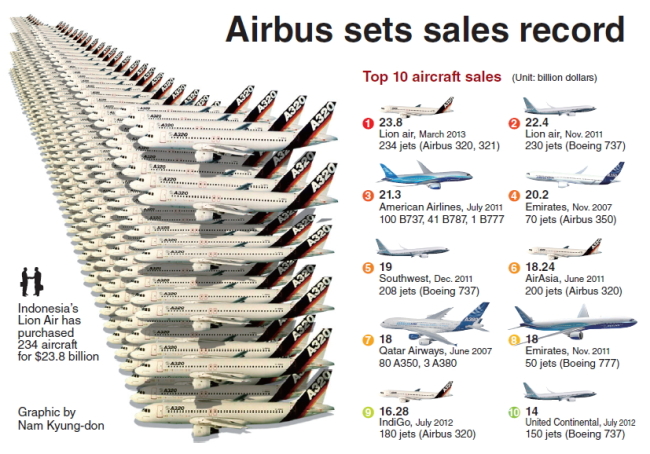 Normal landing gear release occurs in reverse order.
Normal landing gear release occurs in reverse order.
Test video of the landing gear system
In case of malfunctions in the landing gear system, there is a special procedure for extending the landing gear - emergency release. The emergency release is activated by the emergency release button located under the cap next to the landing gear retract handle. In case of emergency release, the locks of the retracted position of the landing gear and doors are removed by means that are independent of the computer of the landing gear retracting system. The chassis falls out under its own weight. The mass of each of the racks is enough to break the sash, even if it does not open itself. The racks also stand on the locks of the lower position under the action of their own weight.
The information about landing gear compression that I mentioned above is very necessary information for many systems. Perhaps it is worth listing some functions that depend on this signal:
Perhaps it is worth listing some functions that depend on this signal:
When the landing gear compression signal occurs:
When the chassis compression signal is removed:
Paragraph added after reading comments: Landing gear compression sensors are usually multi-channel and located on each of the racks.